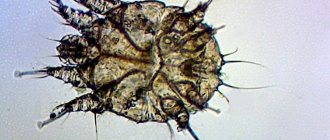If, while petting your cat, you feel a certain growth on the back of her neck, know that you cannot ignore it. But there’s no need to be alarmed prematurely either. Perhaps it's just a lipoma. Lipoma in a cat is one of the most common benign neoplasms in animals, consisting of adipose tissue. It is formed in the subcutaneous tissue and in those internal organs that have a fatty layer. It can penetrate deep into the body, spreading muscles and vascular bundles, to the periosteum. Lipoma usually progresses slowly. It can be removed through a simple surgical operation.
What is lipoma
A lipoma is a soft growth under the epithelium that usually does not cause pain to the cat. But if, as it grows, it pushes aside and compresses muscles and nerve endings, then pain and symptoms of impaired blood flow may appear in the affected areas. It is localized on any part of the body where there is adipose tissue, but more often on the withers or on the stomach. A lipoma may also contain connective tissue, in which case its consistency is denser.
Having discovered such a growth in his pet, the owner must contact a veterinary clinic for an in-person examination, diagnosis and further recommendations for treatment. With these actions he prevents the following unpleasant moments:
- having increased in size, the wen can interfere with the animal’s walking or the functioning of some internal organs;
- Vital vessels and airways in the neck (vertebral artery, trachea) may be compressed;
- sometimes an oncological disease is hidden under the guise of a harmless lipoma;
- lipoma has the ability to degenerate into a malignant tumor (liposarcoma).
Signs of lipoma
In the medical literature, neoplasms are called lipomas. What does a wen look like on a cat? It appears as a soft, mobile lump under the skin. It can penetrate between muscles and form on any part of the body. When it contains connective tissue, it becomes more dense. However, areas depleted in adipose tissue are more likely to be affected by the disease :
- upper back;
- breast;
- groin area;
- tail.
© shutterstock
Lipoma has a slow growth rate. Usually does not cause discomfort in the cat. But depending on its location, it sometimes causes pain or symptoms of circulatory problems. If a wen forms on a cat’s neck, the pet may die from brain hypoxia or suffocation. When located in the armpit area, lameness is observed. Also, constant friction can provoke the formation of a malignant liposarcoma tumor. If you consult a veterinarian in a timely manner, cats with wen will be cured without complications.
What is a wen and what does it look like?
A fatty tumor is a neoplasm that is located between the skin and muscles in loose adipose tissue and can. It feels like the consistency of dough or silicone, i.e. soft and elastic. There is normal mobility and painlessness. In some cases, a lipoma can grow into the muscles - in such cases, the mobility of the tumor decreases and its density increases. Wen, as a rule, grow very slowly, but are capable of growing to significant sizes. Wen can appear anywhere there is loose fatty tissue. At first, the lipoma looks like a small, loose tubercle (bump), inactive in a relatively limited area. Depending on the conditions and condition of the body, the tumor begins to increase. Sometimes it grows to such a size that it involuntarily begins to attract attention to itself and provokes discomfort in the animal. This is explained by the fact that during the growth process the neoplasm can affect the nerve endings in the surrounding tissues.
Wen appears in dogs and cats for two main reasons:
- violation of fat metabolism;
- genetic predisposition.
The main metabolic disorders that provoke the appearance of wen include insufficiently correct functioning of the body's enzymatic system. This means that the animal’s body lacks the required amount or type of enzyme to fully break down accumulated fat into water and internal energy. Those.
Lipomas appear not because too much fat accumulates in the body, but because it is not properly and fully broken down, resulting in the formation of intermediate substances that provoke tumor growth. It is because of this reason that the risk group consists of old animals and overweight animals.
Lipomas are most often found in dogs on the back, sides and tops of the limbs; in cats - on the stomach, in the chest area and along the upper surface of the hind legs.
The diagnosis of lipoma (or wen) is usually made on the basis of fairly specific clinical manifestations. It is also advisable to obtain a tumor sample for additional studies - histology and cytology. Specimens are obtained by aspiration, biopsy, or exploratory surgery. For large lipomas, ultrasound may be indicated.
In any case, no matter where this neoplasm appears, it is absolutely necessary to show your pet to a specialist. It is always necessary to exclude purulent abscesses, cysts and malignant tumors.
Wen in cats is rare. Such skin growths are more common in dogs. In felines, lipid metabolism occurs very quickly, so fatty tumors rarely appear. But there are cases when cats experience metabolic disorders. This becomes In veterinary medicine, such neoplasms are called lipomas. How dangerous are they and how to get rid of them? We will consider these questions in the article.
Can lipomas reappear after surgery? In 70% of cases, no recurrence of tumors is observed. Veterinary experts have found that removing the wen promotes the overall health of the body and prolongs the life of the pet by several years.
The situation becomes somewhat more complicated if the cat suffers from multiple lipomas (lipomatosis). In this case, after the operation it is necessary to review the pet’s diet. You may need to follow a lifelong fat-restricted diet, as well as take medications that normalize lipid metabolism. This will help prevent the recurrence of lipomas.
Wen is found not only in humans, but is characteristic of the Sphynx and other breeds of the cat family. Lipoma in cats, as a rule, is not accompanied by pain and is a cosmetic defect. Such compactions belong to benign tumors consisting of connective tissue. Neoplasms are localized between the epidermis and the muscle corset of the pet. A lipoma can form in the area of the shoulder blades, on the paws or back; less commonly, multiple fatty lumps are found throughout the body.
Wen on the body: reasons, how to get rid of it
A small growth on the skin, a pea-sized “nodule”, can cause anxiety and concern. Concerns increase if the formation begins to gradually increase in size. The specialist’s diagnosis of lipoma only adds fuel to the fire of worry, since it is very similar to the name of many dangerous malignant tumors.
In fact, there is no real reason for concern, since wen extremely rarely (almost never) degenerates into a malignant neoplasm. This is a benign tumor that is characterized by slow growth or stable size over a long period of time. Why wen appears on the body and how to deal with them, you will learn from the publication presented to your attention.
What is a wen?
Wen is an unofficial, “folk” name for a subcutaneous formation formed by adipose tissue. In official medicine, the scientific term “lipoma” is used, which reflects the histological composition of the tumor.
Lipoma is a benign tumor that remains as such throughout its existence. A wen on the body is not characterized by malignant degeneration. From this point of view, it does not pose a health threat. The problem is mainly of an aesthetic nature, especially if the tumor is located on an open area of the body - on the face, on the neck, on the skin of the distal parts of the arms.
A distinctive feature of any benign tumor is that it is formed from cells surrounded by a fibrous capsule. In this way, wen on the body differs from atheroma - another neoplasm, the appearance of which is caused by fat. Atheroma is an accumulation of sebum secreted by the sebaceous glands. Atheroma is formed due to blockage of the ducts of the sebaceous glands. The secretion of the gland cannot come out, accumulates under the skin and manifests itself in the form of a small or medium-sized formation that rises above the skin.
Lipoma, unlike atheroma, does not consist of the secretion of the sebaceous glands, but of fat cells surrounded by a capsule of connective tissue. A skin formation appears as a result of abnormally active division and growth of adipocytes. All cells, regardless of the size of the wen, remain differentiated, that is, they retain their typical characteristics, which makes it easy to distinguish a lipoma from a malignant tumor. A cancer tumor is characterized by impaired differentiation and atypical cell structure. In the case of lipoma, these signs of malignancy are not present.
Lipoma is a benign tumor of adipose tissue, which consists of differentiated adipocytes surrounded by a fibrous capsule. Malignant degeneration is not typical for wen on the body; they do not pose a danger to health or life.
Reasons for the appearance of wen
Numerous studies devoted to the problem discussed in the publication have not made it possible to establish a single cause of lipomas. Currently, it is generally accepted that a wen on the body appears as a result of the combined action of a number of predisposing factors, among which endogenous causes predominate.
Among the risk factors, the most important role is played by metabolic disorders associated with enzymatic deficiency. Particularly dangerous in this regard are disorders affecting the biochemical mechanisms of lipid and carbohydrate metabolism. The cause of lipoma can be hormonal disorders not related to the pathology of the endocrine system. In particular, in women, a neoplasm can appear during pregnancy, lactation or after the end of the lactation period.
Endocrine diseases are also among the risk factors. If a person has wen on the body, the reasons should be sought in the functioning of the hormonal system. Dysfunction of the pituitary, adrenal, thyroid (hypothyroidism) or pancreas (diabetes) may be the root of the problem. A risk factor is an imbalance in the secretion of sex hormones, which is important for women taking oral contraceptives and athletes using pharmacological agents to accelerate results.
A fatty deposit on the body can occur even against the background of complete well-being, that is, in the absence of any endocrine disorders, hormonal changes or metabolic problems. Doctors explain this by genetic predisposition: people whose relatives have encountered a similar problem have a higher risk of developing lipoma. Hereditary, or familial, lipomatosis is characterized by the appearance of multiple wen at a young age.
Among exogenous factors, nutrition is of greatest importance. The risk of lipoma is higher if a person's diet is dominated by simple carbohydrates (sugar, confectionery, flour), as well as saturated and hydrogenated fats. A risk factor is systematic alcohol consumption. All these substances interfere with the natural course of metabolic processes, which is fraught with the formation of a benign tumor of adipose tissue.
Another possible cause of the appearance of a wen on the body is mechanical trauma, which leads to neurotrophic disorders in the integumentary tissues. They, in turn, can provoke the proliferation of subcutaneous fat cells. It is possible that exposure to ultraviolet radiation on the skin plays a certain role, but the connection between this factor and the appearance of lipomas has not been proven.
Localization, appearance, symptoms
The concept of “typical localization” does not apply to wen on the body. The tumor can appear on any part of the body: on the back of the foot or hand, on the shoulder or forearm, on the back, on the chest, on the face or on the abdomen. In short, lipoma does not have a “favorite” location; the tumor can appear anywhere.
As for the symptoms, that is, the appearance of the tumor, there is more certainty. Externally, the lipoma looks like a pea; it is characterized by a rounded shape with regular and even edges. On palpation, the adipose tissue tumor is soft or moderately dense. The surface is smooth. The color can be flesh-colored, reddish or brownish, depending on how abundantly blood vessels grow into the tumor.
An important diagnostic criterion is the mobility of the tumor. The subcutaneous wen on the body is always mobile; it is not fused to deeper tissues and moves freely with the skin. This symptom makes it easy to distinguish a lipoma from a malignant tumor. The latter grows into deep tissues, which is why it becomes immobile.
Size is difficult to use as a diagnostic criterion because it can vary over a wide range. Typically, a fatty tissue tumor has a diameter of 0.5 to 1 cm, but there may be exceptions to this rule. Wen on the body can reach 2-3 cm in diameter. There are cases when, as a result of growth, a lipoma reached gigantic sizes - more than 10 cm in diameter.
The last symptom - pain - is not typical for wen. As a rule, education does not remind us of itself. The exception is situations when a person mechanically injures him. When struck, scratched or pinched, a sharp pain may occur, which is not too intense and passes quickly. However, if a tumor of adipose tissue puts pressure on superficial vessels and nerves, the clinical picture may include moderate or even severe pain.
Are wen dangerous?
As already mentioned, the prognosis for this benign tumor is extremely favorable. The neoplasm is not characterized by malignant degeneration, so nothing threatens life. However, this does not mean that you can forget about lipoma, since certain health risks are still present.
In case of mechanical damage (cut, pinching, blow) inflammatory processes may begin in the depths of the formation. If the integrity of the skin is damaged, there is a risk of infection in the wound. The result of this may be the development of a necrotic or purulent-inflammatory process, after treatment of which visible scars will remain on the skin.
Scars can also form after removal of a large tumor. A small lipoma can be removed without leaving a trace, so that there are no noticeable scars left on the skin. When removing large and giant wen, it is difficult to avoid scar changes. Meanwhile, large wen must be removed, since sooner or later they will begin to put pressure on the nerves and blood vessels. It follows from this that it is better to get rid of the wen at an early stage, before it grows to a large size, the only question is how to do this?
How to get rid of wen?
Many people, in an attempt to get rid of the tumor, resort to traditional medicine recipes. Numerous publications devoted to this problem offer various remedies: compresses made from onions, garlic or sprouted wheat, applications of celandine and other medicinal herbs. Unfortunately, such an approach is doomed to failure; it is not possible to get rid of education using folk remedies. Traditional recipes are unlikely to provoke the growth of a lipoma, but they certainly will not lead to a reduction in its size.
Official medicine offers two options for solving the problem. You can get rid of small lipomas using a minimally invasive procedure, which involves injecting a special solution deep into the formation that destroys adipocytes. The disadvantage of this method is that there is a high risk of relapse, the capsule is not removed, and the method can only be used for small (up to 2-3 cm) tumor sizes.
Surgical removal of a wen on the body is an effective and universal treatment method. The lipoma is removed along with the surrounding capsule. Minor surgery is performed using a traditional, radio wave or laser scalpel. Accordingly, traditional surgical, radio wave and laser removal are distinguished.
All methods of surgical treatment are effective, but from an aesthetic point of view they are not equivalent. After traditional surgical removal of a tumor, small scars often remain, even if the doctor removes a small tumor. Radio wave surgery allows you to minimize the severity of scars, and the laser method makes it possible to perform the operation absolutely without leaving a trace.
Laser lipoma removal has many benefits. The laser knife seals the vessels immediately after they are damaged, reduces bleeding, and injures the skin to a lesser extent. Since laser pulses have a detrimental effect on pathogenic and opportunistic microflora, there is no risk of infectious complications. In addition, the laser stimulates regeneration, which shortens the recovery period, accelerates skin healing and avoids scar formation.
The problem is that the laser method is used only for medium-sized and small-sized wen; large and gigantic ones (more than 10 cm in diameter) are forced to be removed by the doctor using the traditional surgical method. Given their size, it is almost impossible to avoid scar formation.
Since the aesthetic component of the operation is a concern for all patients, doctors recommend removing lipomas in the early stages. The deciding factor is the size of the education. A tumor on the face can be removed without a trace if its diameter does not exceed 1 centimeter. Wen on the body are removed without scarring if their size is no more than 2.5-3 cm.
Laser removal of wen is the most effective and safe method. It is better to remove lipomas in the early stages, when their size does not exceed 1 cm if localized on the face or 3 cm if localized on the body.
The operation is performed on an outpatient basis under local anesthesia; only giant lipomas require the use of general anesthesia (anesthesia). The patient returns home on the day of surgery. During the recovery period, it is necessary to protect the skin from ultraviolet rays and avoid exposure to high or low temperatures. It is advisable not to wet the wound with water and regularly treat it with antiseptic solutions.
Removal of fatty tissues on the body: price
Surgeries to remove fatty tissue are carried out in aesthetic medicine and plastic surgery clinics. It is advisable to contact a medical institution equipped with modern equipment for laser manipulation.
The price of removing wen with a laser is low.
The exact cost depends on the size of the education. The cost of removing a small lipoma (up to 3 cm) in Moscow clinics is about 5 thousand rubles. The cost of treating a tumor up to 10 cm in size increases to 8-9 thousand rubles. Treatment of large and giant lipomas costs more - up to 15 thousand rubles, depending on the size of the formation and the category of complexity of the operation. You will receive more detailed information about lipoma removal methods during a consultation with a doctor at the Galaktika aesthetic medicine clinic (Moscow)
Types of lipomas
Wen in cats can be single in appearance, or can be multiple in nature, especially in the presence of concomitant diseases (deviations in the functioning of the endocrine system). This multiple formation of wen is called lipomatosis.
According to the nature of germination, a lipoma can be simple or infiltrating:
- A simple lipoma has clear boundaries and, as it grows, does not affect the surrounding muscles, so it can easily be surgically removed.
- Infiltrating lipoma grows into the thickness of the muscles and vascular bundles and does not have a clear boundary. It is this type of neoplasm that tends to degenerate.
Varieties
Such formations can be multiple in animals.
Different types of lipoma look different in cats. In pets there is a single lump or multiple formations are possible. The latter is likely in case of secondary diseases in a pet, especially from the endocrine system. If there are several lipomas on the skin at once, then in veterinary medicine the pathology is called lipomatosis. The table shows the types of tumor, taking into account the nature of its germination:
| Type | a brief description of |
| Simple | The boundaries of the lipoma are clearly defined |
| When the wen grows, it does not affect nearby muscles | |
| Easy to remove surgically | |
| Infiltrating | Grows into thick layers of muscle and vascular bundles |
| Without clear contours | |
| It is possible that a lipoma in a cat may degenerate into a cancerous tumor. |
What to do if there is a lump under the skin
If a cat has a lump under the skin, you need to contact a veterinarian who will conduct the necessary tests, establish a diagnosis and prescribe treatment.
Neoplasms are diagnosed using:
- medical examination;
- urine and blood tests;
- Ultrasound;
- endoscopy;
- biopsies.
If oncology or tumors that cause discomfort in the animal are detected, radical therapy is prescribed. In other cases, conservative treatment is acceptable.
If the lump bleeds
Bleeding tumors are life-threatening for your pet, so you cannot do without the help of a veterinarian. To prevent contamination of the wound, the lump is treated with chlorhexidine and bandaged with a sterile bandage. If the formation bleeds, it should not be wetted, cauterized with alcohol-based products, or lubricated with cream without a doctor’s prescription.
Lump with pus
Seals with purulent contents require caution. They should not be pierced or squeezed out to avoid infection and injury to internal organs. If the tumor bursts on its own, the fluid that has accumulated under the skin may break out. The wound is treated with an antiseptic that does not contain alcohol.
A common reason for the appearance of pus-filled bumps is the final stage of cancer. In cats, the mammary glands are affected, and in males, the testes are affected. If the disease is advanced, the veterinarian will prescribe painkillers.
Surgery and care for a recovering cat
First, a simple incision is made. As a rule, small lipomas are removed without any special frills, and therefore the size of the postoperative wound is small. In cases where the weight of the tumor reaches several kilos (the size of such a “miracle” is visible in the photo), massive drainage has to be done. It is worse when it is necessary to operate on an infiltrative lipoma, since in this case it is also necessary to excise the affected muscles, which significantly increases the postoperative recovery period of the animal. Liposarcomas require aggressive resection of almost all tissues that were in direct contact with the tumor. You should also know that hip lipomas are often associated with the sciatic nerve, and therefore increased caution is required during surgery.
In the postoperative period, sedatives and non-steroidal anti-inflammatory drugs are often prescribed. For some time, the cat will be unable to move independently, and therefore must be kept on a drip to avoid dehydration. At home, you should constantly monitor the condition of the surgical field, and at the slightest sign of infection (inflammation, pus), immediately seek help from a veterinarian. Always make sure that the animal does not take off the tight bandage or blanket to lick the cut.
Reasons for appearance
Conclusions about the causes of the disease in each specific case can only be made by a specialist after a comprehensive examination of the animal. But based on the experience of previous cases, we can say that the most common causes of lipomatosis are the following:
- complicated heredity;
- metabolic disease;
- hormonal imbalances in the body;
- physical inactivity;
- endocrinological diseases;
- elderly age.
It is believed that the growth of adipose tissue in the body is promoted by enzymatic deficiency, namely, a deficiency in the body of the enzyme that breaks down fat - lipase. This statement is supported by the fact that not only obese animals are susceptible to this disease, but also those whose layer of fat in the subcutaneous tissue is small.
Causes
Doctors hypothesize that lipoma develops as a result of metabolic changes that arise due to a deficiency of protein regulatory enzymes. The appearance of wen in a cat is due to the blocking of the ability to break down fat due to a lack of the enzyme lipase. Cats are significantly less likely to develop this disease than dogs.
The most common causes of wen development:
- elderly animals;
- autosomal dominant heredity;
- metabolic disease;
- hormonal disbalance;
- diseases of an endocrinological nature;
- feminine animals.
How long do cats with tumors live?
If the lump is benign, then it will not affect the pet's life expectancy. Such neoplasms either do not require treatment or are easily treated.
Oncological diseases are diverse, and the development of tumor processes is unpredictable, so it is impossible to accurately determine how long a cat will live.
It is important that the doctor assess the situation and prescribe treatment based on the individual characteristics of the animal. There are situations when surgery and other emergency methods are contraindicated due to the presence of chronic diseases. In this case, removing the tumor will not prolong life, but will complicate it.
Sometimes we are talking about several months or days of life without pain. The question may also arise about euthanizing your pet. But there are also frequent cases of complete recovery without relapse.
Rehabilitation period
After picking up your cat from the clinic, it is important to follow all the recommendations prescribed by the veterinarian. The doctor will explain what needs to be done and how to properly treat the wound after removing the wen.
The rehabilitation period requires strict adherence to the following points:
- droppers to prevent dehydration;
- sedatives and painkillers;
- antibiotics and anti-inflammatory drugs;
- bandage the wound until complete recovery;
- protective collar around the neck;
- seam care;
- constant monitoring of the general condition of the cat.
© shutterstock
The animal needs daily dressings. The incision should be kept clean. It is necessary to exclude the possibility of licking the wound. Until the suture is completely healed, the wound should be covered with a bandage. If your cat has a wen on her stomach, use a bandage after surgery. The bandage should be well fixed. This will prevent infection, which could slow down your cat's recovery. If inflammation or bleeding occurs, you should contact your veterinarian for advice.
Clinical picture and diagnosis
Single subcutaneous lipomas, typically located, can be easily palpated during examination as soft, painless formations that are easily displaced upon palpation. If the wen is large and located deeper (along the spine or nerve endings), then when pressure is applied, the animal may feel discomfort and pain.
If a lipoma has formed in any organ, you can find out about its presence by indirect signs of its compression. To clarify the diagnosis, modern diagnostic methods are used (magnetic resonance imaging or computed tomography). These methods are effective in preparing an animal for surgery, as they make it possible to determine the exact size of the tumor and its location.
The most informative diagnostic method is a histological examination of the affected tissue to exclude other pathological processes (vascular aneurysm, parasitic invasion or cancer). Typically, a piece of tissue for cytological examination is taken before surgery. But, if the tumor is located in a hard-to-reach place, then an accurate diagnosis can only be made after its removal.
Diagnostic methods
If you suspect a lipoma, you must promptly contact a veterinarian and treat the animal. Before selecting treatment, diagnostic examinations are performed to determine the structure of the tumor and its nature. Diagnostics is also necessary before surgical removal of a lipoma in a cat. To confirm the diagnosis, the following manipulations are performed:
- magnetic resonance and computed tomography;
- histology of damaged tissues to exclude vascular aneurysm, helminthic invasion and oncology.
Histological examination of a tumor in a cat is performed only after removal of the lipoma, especially if it is located in a hard-to-reach place.
Establishing diagnosis
Due to the fact that lipomas do not cause pain, owners often do not pay attention to them. However, after detecting a formation in a cat, it is important to consult a doctor to determine the correct diagnosis. This is explained by the fact that only in the clinic will they be able to determine whether it is a wen or other types of malignant tumor. And also prevent the growth of the tumor. Wen is not an infectious disease and therefore cannot be transmitted to people or other pets.
The veterinarian carries out a number of preliminary measures:
- signs of a wen in a cat are determined by external examination;
- X-ray, ultrasound; puncture biopsy.
© shutterstock
When palpating a cat, single wen can be easily felt. They are soft and easy to move. An x-ray will determine the presence of metastases. In cases where wen is located in hard-to-reach areas, ultrasound will help determine the need for surgery. Using a biopsy, the type of cells that make up an organ or formation in it is determined. A puncture biopsy will clarify the nature of the tumor: benign or malignant. Cytological examination is carried out before surgery.
Diagnosis and preparation for surgery
As we have already said, the biopsy plays the “main violin” here (since any lipoma looks the same). In this case, a piece of tissue is taken from the very depths of the tumor, which is subsequently subjected to cytological examination. In cases where the suspected lipoma is located in hard-to-reach areas, ultrasound and X-ray examinations are also used, which make it possible to determine the prospects for surgical intervention. It is important to understand that this category of tumors (even if they are benign) should be taken seriously and several samples must be taken at once in order to insure against sudden surprises during surgery. Alas, surgery is the only suitable treatment for lipoma. It will not be possible to overcome it by other methods.
Treatment of the disease
Based on the diagnostic results, the doctor can make two decisions:
- constant monitoring of the dynamics of the tumor;
- performing surgery to remove a lipoma.
Surgery to remove a simple lipoma is usually simple and is done under local anesthesia. A large tumor that is difficult to reach may require general anesthesia.
Preparation for the operation should include the following:
- it is necessary to inform the surgeon about what medications the animal has taken recently;
- you should not feed the cat on the last day before surgery;
- You need to give her enough fluids.
In the case of a burst wen, the operation to remove it is transferred from the category of planned to the category of urgent.
This operation usually does not last long, after which the patient recovers quite quickly. The doctor makes an incision and removes the capsule containing the wen, separating it from healthy tissue. The resulting cavity is carefully stitched. Healing usually goes well, and after 7-10 days the stitches are removed.
If the surgeon has to deal with an infiltrating lipoma that has grown into muscle tissue, then it takes more time to free the affected muscles. This increases the wound surface, and, accordingly, rehabilitation lasts longer. Sometimes large nerves in the back are involved in the pathological process. In this case, special professionalism is required from the doctor so as not to damage them without impairing the sensitivity and motor function of the body.
The postoperative period requires maintenance therapy:
- prescribing sedatives, antibiotics and anti-inflammatory drugs;
- prescribing IVs with an electrolytic solution to combat dehydration;
- home monitoring of the animal's condition;
- A protective collar on the cat's neck will help protect the post-operative area from licking and infection.
Deterioration in the animal’s well-being requires urgent consultation with a veterinarian.
Treatment: effective methods
If an animal requires general anesthesia to remove a tumor, then it is not fed beforehand.
In most cases, surgical removal of the wen is performed in a veterinary clinic. The tumor is easily removed, while the operation is light and local anesthesia is required. If the wen is localized in hard-to-reach places, then it is recommended to use general anesthesia. Before surgery, the cat is prepared by performing the following steps:
- Inform the specialist about possible medications taken by the animal.
- The pet is not fed the day before removal.
- Give the required amount of water.
If a cat's wen bursts, emergency surgery is required. The operation lasts on average about an hour, during which the surgeon makes an incision and excises the tumor capsule. After which the cavity is carefully sutured, and after 1-2 weeks the sutures are removed if recovery is successful. With an infiltrating lipoma in a cat that has grown into muscle tissue, the operation takes longer.
Recovery process
Although surgery to remove a tumor from a cat is not complicated, it is still necessary to follow the veterinarian’s recommendations during the rehabilitation period so that the pet recovers quickly. After surgery, the following recovery measures are taken:
The animal's seams will remain intact if it wears a special collar.
- give the cat sedatives, antibacterial and anti-inflammatory drugs;
- electrolytic solutions are administered to prevent dehydration;
- carefully monitor the condition and nutrition of the sick pet;
- Put a protective collar on the animal so that it does not scratch the postoperative sutures.
Clinic
Older cats are most often affected. These animals suffer much less often than their canine counterparts. If any formation appears on the skin of an animal, you should immediately seek qualified medical help to exclude a cancerous tumor and carry out treatment in a timely manner.
The symptoms are always the same; swelling appears on some part of the body. She can remain in this position for a long period of time. Over time it grows, the sizes may vary. The pet's general condition does not suffer, it may cause discomfort when walking or lying down, depending on the location of the wen.
Veterinarians, having carried out an examination and diagnosis, remove the tumor, followed by a histological examination of the cells.
Disease prognosis
The prognosis of the disease, subject to surgical intervention, is favorable, especially if the size of the wen is small and the cat is in good physical condition. Relapses of the disease are rare. Almost all cases of relapse relate to infiltrating variants of the disease. Recently, veterinarians have been practicing radiotherapy for such forms of the disease, which has significantly increased the percentage of cases of complete recovery.
Lipoma or wen are diseases for which self-medication is unacceptable. At best it will be ineffective, and at worst it will be harmful. Therefore, the only possible way out in such a situation is to visit a veterinary clinic.
Diagnosis of pathology in cats
An owner who is concerned about the condition of his pet should bring him to a competent specialist for examination. The veterinarian will conduct a number of mandatory studies:
- First, the doctor must carefully examine the animal.
- Next, he will ask the cat's owner questions about her health.
- Afterwards, general laboratory tests are carried out, which include blood and urine tests.
- If a specialist cannot diagnose a disease based on the test results, he will prescribe an ultrasound scan for the animal.
In addition to ultrasound, CT is also prescribed. These diagnostic methods allow the veterinarian to determine the degree of infiltrative neoplasm.
In rare cases, it becomes necessary to conduct a study of the cat's immune system. This diagnosis helps the specialist make the correct diagnosis. After all, lipoma symptoms often appear in various immunodeficiency states of pets, as well as in leukemia.
Dangerous symptoms
The larger the formation, the more discomfort it causes the animal. Wen often remains undetected in cats for a long time, since there is no obvious clinical picture. The earlier a lipoma is recognized, the easier it is to treat and restore your pet. Externally, this is a soft neoplasm, upon palpation of which the pet does not feel pain. If you try to move it to the side, it moves easily. Unpleasant symptoms are observed in the case of large growth of the lipoma, as a result of which there is a high probability of compression of the nerve endings. Often a lipoma is localized on an internal organ.
First aid and treatment for cats
As a rule, first aid and treatment of a cat in such cases is the prerogative of a veterinarian. We can advise the owners themselves the following:
- It is necessary to immediately provide the animal with complete rest; if necessary, it should be isolated from other pets and small children.
- If the lump has formed suddenly, you can apply cold in the first half hour to an hour. Do not use warming or cooling ointments.
- To make paw care and treatment easier, you can clip the hair around the coat.
- If pus or other exudate is released from the neoplasm, it must be regularly removed from the skin.











